Last updated on August 5th, 2014
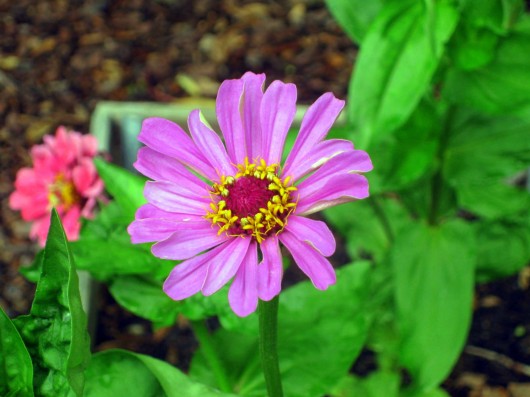 IN AUGUST, the perennial garden winds down…and the veggie garden explodes. It’s time to pickle the cukes, sauce the tomatoes, and freeze the broccoli and beans. Then there are annuals to propagate, bulbs to order, and…anyone else need a Valium?
IN AUGUST, the perennial garden winds down…and the veggie garden explodes. It’s time to pickle the cukes, sauce the tomatoes, and freeze the broccoli and beans. Then there are annuals to propagate, bulbs to order, and…anyone else need a Valium?
More anxiety! My garden will be open to the public on Saturday, August 16, 10AM-4PM. The tour benefits the good work of the Garden Conservancy. If you’d like to attend, just visit the Garden Conservancy’s website for details.
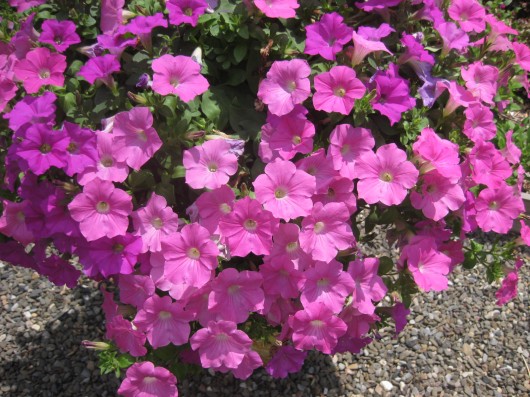 Container Plantings. These will keep their looks until frost if you remove spent flowers regularly. Remember that container plants must be fed and watered daily — twice daily, in fact, during periods of high heat.
Container Plantings. These will keep their looks until frost if you remove spent flowers regularly. Remember that container plants must be fed and watered daily — twice daily, in fact, during periods of high heat.
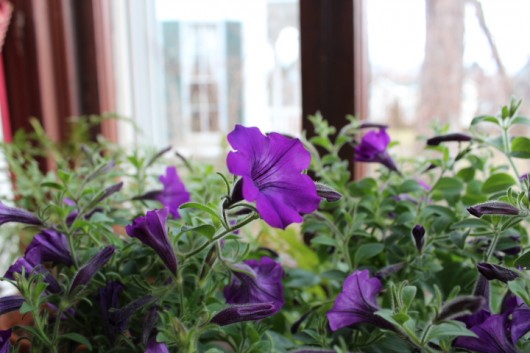 Petunias, Wax Begonias, Impatiens. I take cuttings of these in August, and root them in pots of good soil. Brought indoors before frost, the tender plants provide cheerful bloom during the dark winter months. The how-to.
Petunias, Wax Begonias, Impatiens. I take cuttings of these in August, and root them in pots of good soil. Brought indoors before frost, the tender plants provide cheerful bloom during the dark winter months. The how-to.
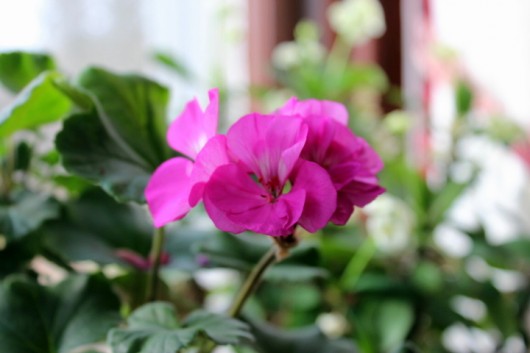 Geraniums (Pelargoniums). I prepare mine for winter-bloom this way.
Geraniums (Pelargoniums). I prepare mine for winter-bloom this way.
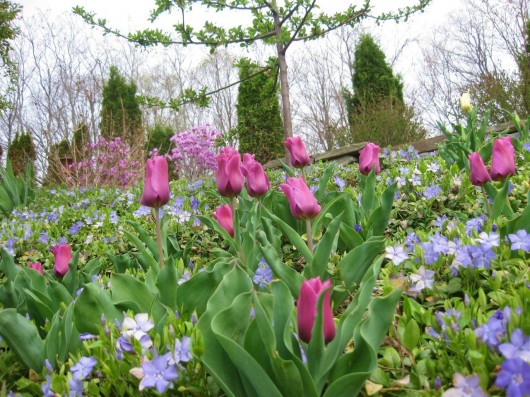 Bulbs. It’s the early gardener who gets the best tulips, hyacinths, narcissi and other spring bulbs. Order now to avoid disappointment. I obtain most of my bulbs from this source; for special, heirloom varieties, I shop here.
Bulbs. It’s the early gardener who gets the best tulips, hyacinths, narcissi and other spring bulbs. Order now to avoid disappointment. I obtain most of my bulbs from this source; for special, heirloom varieties, I shop here.
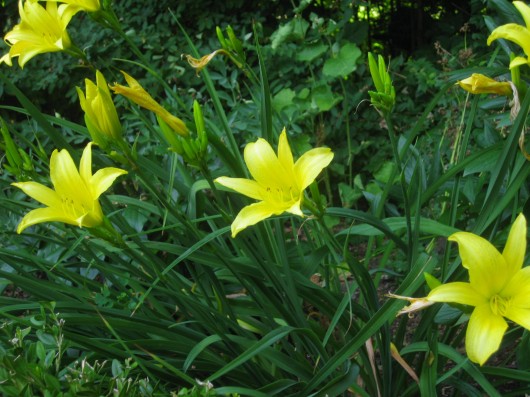 Daylilies. Following a heavy rain, divide and transplant big clumps. (I hope you have fragrant yellow ‘Hyperion,’ pictured above, in your daylily collection.)
Daylilies. Following a heavy rain, divide and transplant big clumps. (I hope you have fragrant yellow ‘Hyperion,’ pictured above, in your daylily collection.)
Lawns. Let the weather, not the calendar, dictate your mowing routine. Do not mow at all during times of drought.
Perennial Seeds. If you are feeling energetic, sow next year’s crop of delphiniums, asters, hollyhocks and other perennials anytime now. Or, you can wait — as I do — and winter-sow the seeds during the less-harried months of January and February.
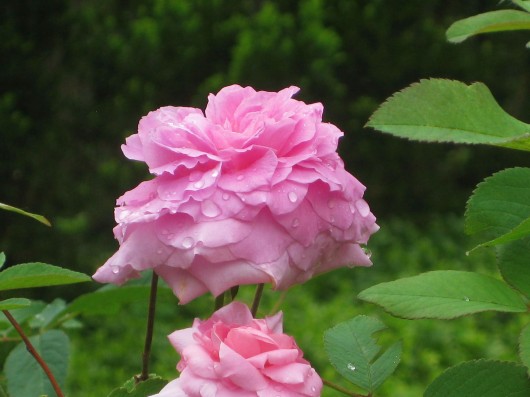 Roses. Continue to deadhead. Also, fertilize one last time for autumn bloom. If blackspot is a problem, you’ll find an organic treatment in you refrigerator.
Roses. Continue to deadhead. Also, fertilize one last time for autumn bloom. If blackspot is a problem, you’ll find an organic treatment in you refrigerator.
(I’ll admit my own roses look rather pathetic just now. Only a few survived the horrid winter of 2014. Even my Knock Outs were knocked out.)
Veggies
Beans, Green. Better harvest and preserve these before they get old and woody. How I freeze green beans for winter use.
Beets. If you hurry, you can get another crop in for autumn harvest. Otherwise, dig up roots and freeze or can them. I freeze mine.
Broccoli. Keep an eye on the green heads, and be sure to cut them before they go to flower. Want to freeze your crop? The directions are here.
Brussels Sprouts. Stake tall plants that have fallen over. Begin to harvest the green, cabbage-like sprouts from the bottom of the stalk. Sprouts higher up will mature later. They become even sweeter after they endure a light frost.
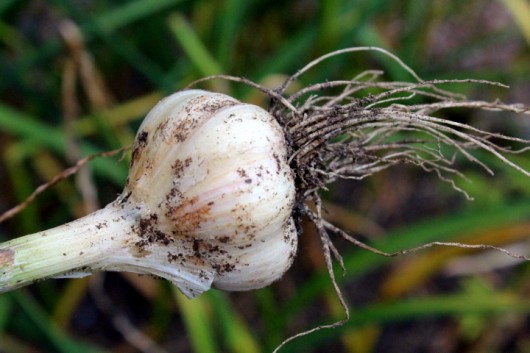 Garlic. Harvest when the green tops turn yellow. How I plant, grow, harvest and store garlic.
Garlic. Harvest when the green tops turn yellow. How I plant, grow, harvest and store garlic.
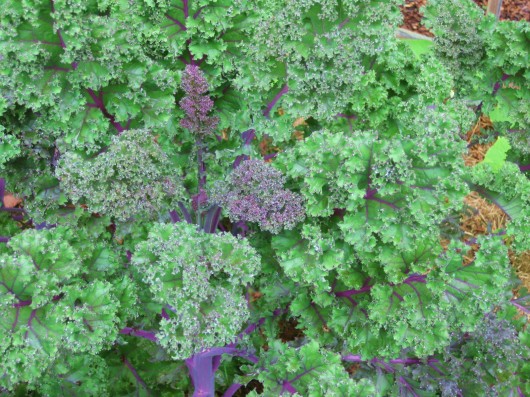 Kale. Keep picking, and the plant will keep producing leaves until checked by the first hard frost. Lately, I’ve enjoyed turning some of the leaves into these crisp, nutritious Kale Chips.
Kale. Keep picking, and the plant will keep producing leaves until checked by the first hard frost. Lately, I’ve enjoyed turning some of the leaves into these crisp, nutritious Kale Chips.
You might like to freeze your kale and other leafy greens for winter use. I freeze mine this way.
Onions. Harvest when green tops fall over. How I harvest, cure and store onions.
Shallots. Harvest when the green tops show brown at the tips. Cure and store as for onions.
Peas. Sow your storage-crop early this month.
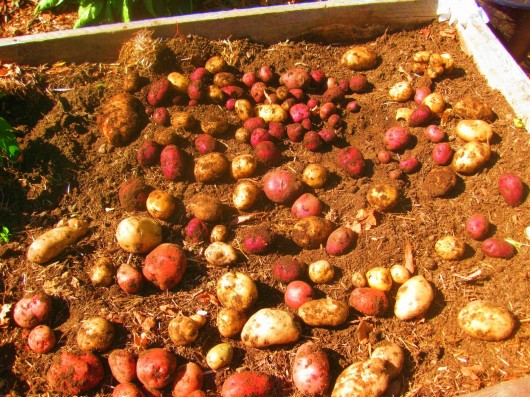 Potatoes. Although you can harvest these anytime after vines die back, I always leave mine underground until October. Why? Because my cellar isn’t cool enough before then to store the crop. How I harvest and store potatoes.
Potatoes. Although you can harvest these anytime after vines die back, I always leave mine underground until October. Why? Because my cellar isn’t cool enough before then to store the crop. How I harvest and store potatoes.
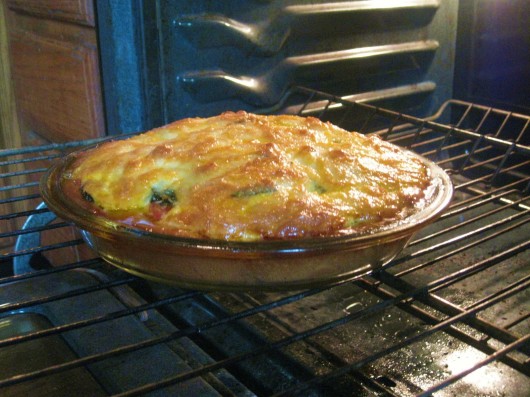 Tomatoes. I hope you’ll turn some of your large, ripe tomatoes into this simple but swoon-worthy Tomato Pie.
Tomatoes. I hope you’ll turn some of your large, ripe tomatoes into this simple but swoon-worthy Tomato Pie.
Zucchini. Too many to deal with? Freeze the squash. And don’t forget to make these Angelic Zucchini Fritters. They are devilishly delicious!
Don’t miss anything at A Garden for the House…sign up for Kevin’s weekly email updates.
Related Posts:
Tomato and Goat Cheese Tart
Flower Arranging How-To: A Sumptuous Summer Centerpiece
Limoncello Cookies

Susan says
Kevin, would you be kind enough to tell me what is the flower in the first picture you have on this entry? I love it!
Susan
Kevin Lee Jacobs says
HI Susan – It’s a handsome zinnia. The variety, according to the seed packet, is ‘Purple Prince.’
Cary Bradley says
How did I forget to tell you that my winter-sowed Russell lupine flowered this year!!! So very excited. Meant to run right in and thank you for sharing your technique, but somehow got deterred. Kevin, thank you!!! It was the most gorgeous bloomer. I think I set it out the year before into the soil, maybe a bit late, so saw no flower, but this year, it was glorious! The seeds produced are adorable and I’m saving them for this winter’s sowing! My mother always adored lupine and in warm Southern California, they grew wild along roads with California poppy, but I was never able to get them to grow. Sooooo very excited to have them in my garden now. Thanks so much for the sweet memory of my mother, growing in my garden thanks to you! Adore you!!! 🙂
Arden Rembert Brink says
Love to see what all is going on in your garden. I just discovered the perennial “hardy hibiscus” with their dinner-plate sized blooms — can’t believe I’d never even known these existed! — so am planting one of those today, with more to come next week. Wish I were around for your garden tour. And Happy Anniversary too!! Hope you and Will have many more years of happiness together.
–arden–
Terri says
Kevin,
Your garden looks lovely. If I lived closer ( I live in Delaware) I would visit your garden.
I planted 4 cucumber pickle plants and I have had so many cucumbers that I have made pickles 5 times now. I have made bread and butter, dill, sweet which I used a packaged mix to make. One time I used a home made mix to dill some since I was growing dill weed out in my herb garden. In each jar I put a grape leaf in the bottom to help keep the pickles crisp.
Speaking of grapes, Kevin do you grow grapes in your garden? If so, do you have a problem with “black rot” on your vines? Have any suggestions on how to fix this problem?
Now my tomatoes are starting to ripen and there are lots more to still turn red. Time to make some tomato sauce and spaghetti sauce to put in the pantry.
I am having a good season with corn, beans, and cucumbers. My plum tomatoes got a late start but are getting tomatoes on the plants now.
I planted potatoes but the plants are still nice and green so it is not time to dig up the potatoes yet.
Kevin Lee Jacobs says
Hi Terri – Sounds like your garden is flourishing! The milk and water solution (click the “in your refrigerator” link under “Roses” above) is supposed to control black spot on grapes, too.
Arthur in the Garden! says
Wow! Your veggie garden is beautiful!
Terri says
Kevin,
Thank you for your reply. It is probably too late to help the grapes on the vines this year, but will
spray the vines anyway to try and kill the black spot. I will start spraying next year once the leaves on the vines start to sprout .
Lori G. says
Hi Kevin and thanks for the list! My tomatoes are running behind this year and I don’t have the plentiful fruits I’ve had before. I’m sure someone at the farmer’s market will help me with that though.
I’m trying something new with brussel sprouts this summer. I read that in my zone (5 in Nebraska) if you want fall brussel sprouts, you should sow the seeds directly into the garden in mid-summer. I did so a couple weeks ago and I have some tiny sprouts now. Keeping them alive in the heat might be a challenge though. I’m hoping this works as so far my brussel sprouts have been all plant and no sprouts.
Anne in Vermont Zone 4/5 says
Harvest the brussels sprouts from the bottom of the stalks? What brussels sprouts? I have large plants but no budding sprouts. This year is my first attempt at growing these and I am sad not to see anything but foliage to feed the cabbage white caterpillars. Any ideas what is wrong so I can try again next year?
Anne in Vermont Zone 4/5 says
Kevin, the link to see how you freeze your kale does not work. For myself, I just wash it and stuff it into freezer bags. I know blanching is supposed to preserve the flavour, but I have been unable to tell the difference between blanched and unblanched frozen kale. Is it my palate? I was hoping your approach would clarify this. Can you please provide a usable link? Thanks.
Theresa says
I’ve been sharing your Tomato Pie recipe with everyone I know. It’s the best and easiest recipe I’ve found in a very long time. And I get SO EXCITED when there are finally fresh ripe tomatoes so I can make it. (There’s a half-eaten tomato pie on my counter right now.) LOVE IT!!!
Kevin Lee Jacobs says
Lori G and Anne in VT – In my (rather considerable!) experience, Brussels sprouts need a very long growing season.
Anne in VT – Kale link is fixed.
Theresa – So glad you like the tomato pie!
Terry says
How do you plant perennial seed in Jan-Feb?? Here in Illinois there is usually ice and/or snow on the ground. I have lots!! of hollyhock seed and hardy hibiscus seed.
I have been reading that planting shrubs and of course trees in the fall is the best time as they will
put their energy into the roots and not flowering. What are your thoughts on this?? I am in zone 5 and have many shrubs to be replanted as well as to sell or give away.
Kevin Lee Jacobs says
Hi Terry – Click on the highlighted text beside “Sow Perennial Seeds”, and you’ll learn how hollyhocks and many other perennials and hardy annuals can be planted in January/February, regardless of the weather. Trees and shrubs: These can be planted in autumn, as long as they have plenty of time before frost (several weeks) to put out new roots. Early spring, immediately after new growth is evident, is another good time to plant/transplant.
Betty-Anne says
Kevin, could you share your tomatoe sauce recipe, for those of us who would like to freeze or can some for the winter. Thanks, Betty-Anne